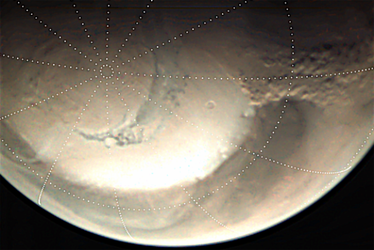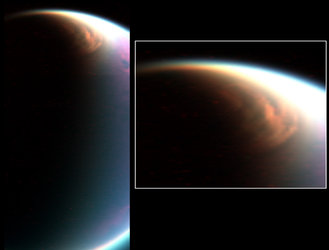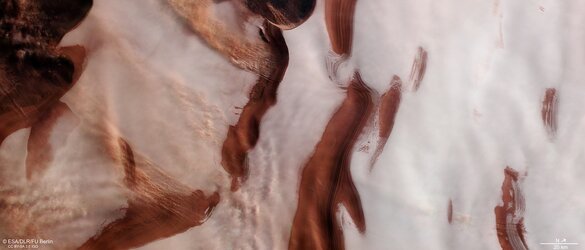Accept all cookies Accept only essential cookies See our Cookie Notice

About ESA
The European Space Agency (ESA) is Europe’s gateway to space. Its mission is to shape the development of Europe’s space capability and ensure that investment in space continues to deliver benefits to the citizens of Europe and the world.
Highlights
ESA - United space in Europe
This is ESA ESA facts Member States & Cooperating States Funding Director General Top management For Member State Delegations European vision European Space Policy ESA & EU Space Councils Responsibility & Sustainability Annual Report Calendar of meetings Corporate newsEstablishments & sites
ESA Headquarters ESA ESTEC ESA ESOC ESA ESRIN ESA EAC ESA ESAC Europe's Spaceport ESA ESEC ESA ECSAT Brussels Office Washington OfficeWorking with ESA
Business with ESA ESA Commercialisation Gateway Law at ESA Careers Cyber resilience at ESA IT at ESA Newsroom Partnerships Merchandising Licence Education Open Space Innovation Platform Integrity and Reporting Administrative Tribunal Health and SafetyMore about ESA
History ESA Historical Archives Exhibitions Publications Art & Culture ESA Merchandise Kids Diversity ESA Brand Centre ESA ChampionsLatest
Space in Member States
Find out more about space activities in our 23 Member States, and understand how ESA works together with their national agencies, institutions and organisations.
Science & Exploration
Exploring our Solar System and unlocking the secrets of the Universe
Go to topicAstronauts
Missions
Juice Euclid Webb Solar Orbiter BepiColombo Gaia ExoMars Cheops Exoplanet missions More missionsActivities
International Space Station Orion service module Gateway Concordia Caves & Pangaea BenefitsLatest
Space Safety
Protecting life and infrastructure on Earth and in orbit
Go to topicAsteroids
Asteroids and Planetary Defence Asteroid danger explained Flyeye telescope: asteroid detection Hera mission: asteroid deflection Near-Earth Object Coordination CentreSpace junk
About space debris Space debris by the numbers Space Environment Report In space refuelling, refurbishing and removingSafety from space
Clean Space ecodesign Zero Debris Technologies Space for Earth Supporting Sustainable DevelopmentApplications
Using space to benefit citizens and meet future challenges on Earth
Go to topicObserving the Earth
Observing the Earth Future EO Copernicus Meteorology Space for our climate Satellite missionsCommercialisation
ESA Commercialisation Gateway Open Space Innovation Platform Business Incubation ESA Space SolutionsLatest
Enabling & Support
Making space accessible and developing the technologies for the future
Go to topicBuilding missions
Space Engineering and Technology Test centre Laboratories Concurrent Design Facility Preparing for the future Shaping the Future Discovery and Preparation Advanced Concepts TeamSpace transportation
Space Transportation Ariane Vega Space Rider Future space transportation Boost! Europe's Spaceport Launches from Europe's Spaceport from 2012Latest

Explore the data behind ESA’s Mars webcam
Thank you for liking
You have already liked this page, you can only like it once!
Volcanoes, ice caps, dust storms, curious clouds and a double vortex are just some of the delights captured by ESA’s Mars Express ‘webcam’, and now the data behind the images are available in the Planetary Science Archive, the central repository for all scientific data returned by ESA's Solar System missions.
Originally intended as an engineering instrument to watch the release of the Beagle 2 lander in 2003, the Visual Monitoring Camera (VMC) onboard ESA’s Mars Express was repurposed to observe the Red Planet since 2007, and became a recognised science instrument in 2016. Now the data behind the images are available in the Planetary Science Archives alongside that of the spacecraft’s other seven science instruments.
The data comes from observations taken of the Red Planet between 2007 to mid-2020, as well as of the release of the Beagle 2 lander in 2003, calibrated for scientific use and available in different formats.
Data from the VMC has already been instrumental for a number of scientific studies and publications. Previously, VMC images were only available via a Flickr page, but today’s release is the first ‘science data’ release for the instrument, and is the culmination of several years of hard work by the VMC team.
Stunning views of the Red Planet will continue to be provided to the general public through Flickr in near real-time – usually within a few days of when the images were taken at Mars.
The image collage presented here highlights some of the beautiful views already captured by the camera and which are available in the archive and gallery. From left to right, row by row: Dust/water ice over the north pole (4 October 2019); Arsia Mons Elongated Cloud (12 November 2008); Olympus Mons caldera (19 October 2019); Double cyclone at the edge of the north pole (16 June 2012); Full disk of Mars with south pole visible (17 November 2016); Part of Valles Marineris with hazes present (12 November 2018); Tharsis Volcanoes and Olympus Mons (9 June 2010): Cloud over Olympus Mons (9 January 2019); Textured patterns in north polar cap (1 January 2020); Polar hoods (water ice clouds) over the north polar cap (28 December 2010): Valles Marineris canyon system (1 July 2008); Full disk of Mars with Tharsis volcanos visible (22 October 2017); Local dust storm over the north polar cap (6 September 2016); Syrtis Major (9 March 2020); Twilight clouds on Mars (25 November 2019); Close up of the south pole of Mars (8 August 2010).
Read more about the data release via the Mars webcam blog
Explore the data here
-
CREDIT
ESA/MEX/VMC -
LICENCE
CC BY-SA 3.0 IGO or ESA Standard Licence
(content can be used under either licence)

Dusty clouds at the martian North Pole

Titan's Giant North Pole Cloud

Rover craters

Frost build-up near Mars north pole















 Germany
Germany
 Austria
Austria
 Belgium
Belgium
 Denmark
Denmark
 Spain
Spain
 Estonia
Estonia
 Finland
Finland
 France
France
 Greece
Greece
 Hungary
Hungary
 Ireland
Ireland
 Italy
Italy
 Luxembourg
Luxembourg
 Norway
Norway
 The Netherlands
The Netherlands
 Poland
Poland
 Portugal
Portugal
 Czechia
Czechia
 Romania
Romania
 United Kingdom
United Kingdom
 Slovenia
Slovenia
 Sweden
Sweden
 Switzerland
Switzerland

























